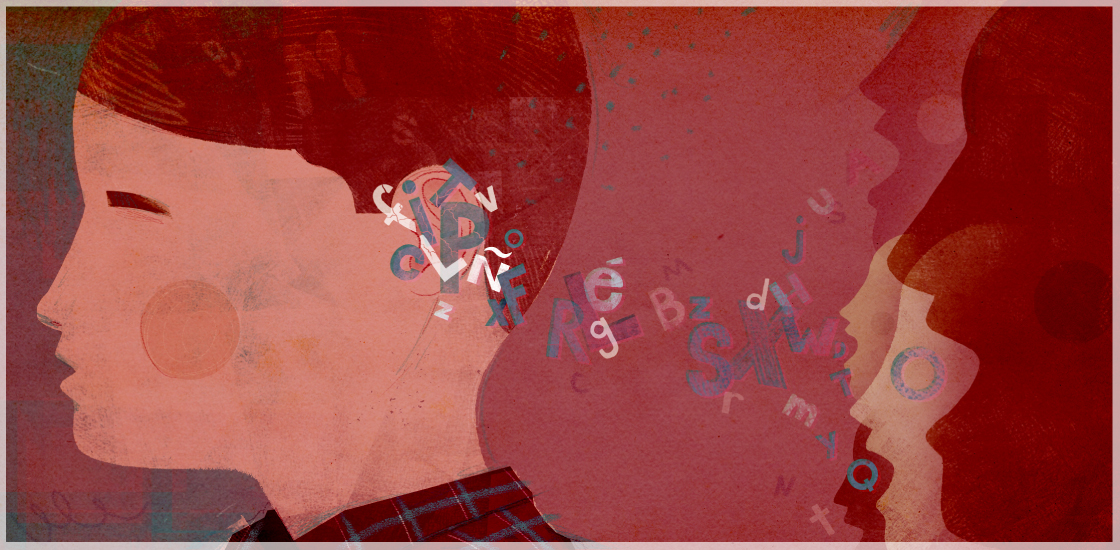THIS ARTICLE IS MORE THAN FIVE YEARS OLD
This article is more than five years old. Autism research — and science in general — is constantly evolving, so older articles may contain information or theories that have been reevaluated since their original publication date.
A key part of the brain’s sound-processing machinery appears to mature slowly in children with autism, according to a large study of auditory processing in autism. The findings may help to explain the language impairments associated with autism1.
Previous studies have examined the brain’s response to sound in small numbers of children with autism. These studies have hinted at autism-linked abnormalities in the auditory cortex, a brain region that sits above the ear on each side of the head and interprets audio signals.
In the new study, published 30 December in Molecular Autism, researchers explored the structural and functional underpinnings of sound processing in 52 children with autism and 63 controls. The children ranged in age from 6 to 14 years, allowing the researchers to look at age-related differences in the auditory cortex.
The findings hint that the auditory cortex develops more slowly in children with autism than in typically developing children. This delayed maturation, in turn, could derail language development.
“If it takes longer to process very basic auditory information like tones, this delay is going to become more prominent when you’re trying to encode more complex information like words and sentences,” says lead researcher J. Christopher Edgar, associate professor of radiology at the Children’s Hospital of Philadelphia. “So this delay starts to build up, and everything starts to be delayed when you’re dealing with complicated linguistic information.”
The results are not definitive, however, as they come from a group of children of different ages as opposed to the same children tracked over time.
“The study points once more to the fact that functional abnormalities in autism are age-specific, and stresses the need for longitudinal studies,” says Elena Orekhova, researcher at the University of Gothenburg’s Gillberg Neuropsychiatry Centre in Sweden, who was not involved in the study.
Delayed reaction:
The researchers used a technique called magnetoencephalography (MEG) to monitor how neurons on the left and right sides of the brain respond to short, barely audible beeps piped into a child’s ears through a headset. By detecting changes in the brain’s magnetic field, MEG measures how quickly neurons fire in response to a stimulus, such as a sound. The researchers then used structural magnetic resonance imaging to map the auditory cortex and pinpoint the exact location of the firing neurons within that region.
They examined two different brain responses to sound in the same children. They also recorded high-frequency brain waves known as gamma rhythms, which change in response to sound and are thought to be altered in autism.
“We examined multiple neural processes to obtain a more complete picture of the maturation of auditory cortex function in children with autism,” says study investigator Timothy Roberts, professor of radiology at the Children’s Hospital of Philadelphia.
In children under 10 years of age, neurons typically fire in the auditory cortex about 200 milliseconds after exposure to a beep. In older children, this response gives way to a more mature auditory signal that occurs about 130 milliseconds after a child hears a sound. In adults, neurons fire within 100 milliseconds of an auditory cue.
The researchers previously reported an 11-millisecond auditory processing lag in the mature auditory response among children with autism who were 10 to 16 years old. In the new study, which the researchers call the largest of its kind to date, Edgar and his team confirm this lag, and reveal a similar delay in the auditory responses of younger children.
Gamma rhythms following the beeps were slightly harder to detect in children of all ages with autism than in controls, consistent with previous reports that abnormal gamma rhythms may exacerbate sound-processing delays in people with autism2.
Because the auditory cortex normally becomes more efficient with age, the slower-than-normal responses in children with autism across both age groups hint at sluggish maturation of the auditory cortex.
“It’s a solid study that adds one more piece to the autism puzzle,” says Elizabeth Pang, a neurophysiologist at the Hospital for Sick Children in Toronto, who was not involved in the study.
Hearing hiccups:
The researchers also found that with age, typical children gradually start responding to beeps in the right ear more quickly than to beeps in the left, though the implication of this lopsided response is unclear. Children with autism do not appear to develop this preference, further suggesting that auditory development is off-track in these children.
Orekhova points out, however, that the processing delay may originate from something other than autism itself. For example, autism is about six times more prevalent among children who have hearing problems than in the general population. It is possible, she says, that slight hearing impairments that happen to co-occur with autism delay the maturation of the auditory cortex and interfere with sound processing.
“Although the study contributes to a better understanding of the mechanisms of autism, it does not give direct promise for development of autism biomarkers,” she says.
Edgar’s group is set to start a long-term study to explore the relationship between auditory response times and autism severity in the same children over time.

By joining the discussion, you agree to our privacy policy.